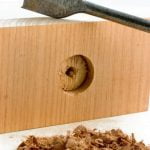Understanding tax deductions is important when it comes to maximizing potential savings on your taxes. One area that homeowners often wonder about is whether they can claim home improvements on their taxes. In this article, we will provide an overview of the topic and explore the guidelines set by the Internal Revenue Service (IRS) regarding eligible home improvements for tax deductions.
Tax deductions are an essential tool for individuals and businesses to legally reduce their taxable income. By understanding and maximizing deductions, taxpayers can potentially lower their overall tax liability and keep more money in their pockets. Can you claim home improvements on your taxes? Let’s delve into this topic to find out.
Before exploring the specific requirements for claiming home improvement deductions, it is important to differentiate between repairs and improvements. Home repairs, such as fixing a leaking roof or repairing a broken window, are generally not considered tax-deductible expenses. On the other hand, certain home improvements may be eligible for deductions if they meet specific criteria outlined by the IRS.
In the following sections of this article, we will discuss qualifying home improvements that may be tax-deductible, including energy-efficient upgrades, medical necessity modifications, and renovations made for a home office space. We will also provide guidance on claiming these deductions on your taxes based on your filing status and required documentation. Additionally, we will explore any limitations or exclusions that apply to claiming home improvement expenses and highlight other potential tax benefits related to these investments.
By understanding the rules and regulations surrounding home improvement tax deductions, homeowners can make informed decisions about their projects while maximizing potential tax savings. With proper documentation and knowledge of the process, you can ensure that you are taking advantage of all available opportunities to reduce your taxable income through eligible home improvement expenses. Let’s dive into each aspect of this topic in detail.
Understanding Tax Deductions
Tax deductions play a crucial role in maximizing potential savings when it comes to filing taxes. By understanding what tax deductions are and how they work, homeowners can take advantage of various opportunities to claim home improvements on their taxes.
A tax deduction is an expense that you can subtract from your taxable income, reducing the total amount of taxes you owe. By itemizing deductions instead of taking the standard deduction, homeowners can potentially lower their tax liability even further. However, it’s important to note that not all expenses are eligible for deductions, so understanding which expenses qualify is essential.
Maximizing deductions is significant because it can result in substantial savings for homeowners. Deducting eligible home improvement expenses means keeping more money in your pocket and potentially receiving a tax refund. It’s crucial to review the Internal Revenue Service (IRS) guidelines and consult with a tax professional to ensure accuracy and optimize potential savings.
To differentiate between home repairs and home improvements is essential when it comes to claiming these expenses on your taxes. Home repairs involve fixing or replacing something already existing in your home but do not enhance its value or prolong its life significantly. On the other hand, home improvements are enhancements made to increase the value, energy efficiency, or functionality of a property.
It’s important to note that while home repairs are generally not tax-deductible, certain types of home improvements may be eligible for deductions.
Differentiating Home Repairs vs. Home Improvements
Clear Distinction between Repairs and Improvements
When it comes to claiming home improvements on your taxes, it is crucial to understand the difference between repairs and improvements. Repairs are considered maintenance expenses that are necessary to keep your home in good working condition. These can include fixing a leaky roof, replacing a broken window, or repairing a faulty plumbing system. On the other hand, improvements involve making upgrades or enhancements to your property that increase its value or prolong its useful life.
The IRS provides clear guidelines on differentiating repairs from improvements. According to their criteria, an expense can be considered an improvement if it adds value to the property, adapts it for new uses, or extends its life expectancy.
For example, installing new kitchen cabinets would be considered an improvement as it enhances the value and functionality of the kitchen. However, simply repainting the existing cabinets would be classified as a repair since it maintains the existing features without substantially changing or increasing their value.
Explanation of How Repairs Aren’t Tax-Deductible while Improvements May Be Eligible
One important distinction between repairs and improvements is their treatment for tax purposes. Generally, expenses related to home repairs are not tax-deductible. This means you cannot claim them as deductions on your income tax return. On the other hand, certain home improvements may be eligible for tax deductions or credits.
The reason behind this differentiation lies in how repairs versus improvements are viewed by the IRS. Since repairs are considered ordinary maintenance expenses necessary for keeping your home in good condition, they are seen as part of regular homeownership responsibilities and do not provide any additional financial benefits that could warrant a deduction.
In contrast, home improvements are perceived as investments made to enhance the value or efficiency of your property. They are recognized as capital expenses that contribute to improving the overall quality of your home and potentially increasing its resale value. As such, the IRS allows taxpayers to deduct a portion of these expenses to help offset the costs and incentivize homeownership.
Qualifying Home Improvements
Requirements for Home Improvements to be Tax-Deductible
To determine whether your home improvements qualify for tax deductions, it’s crucial to understand the requirements set by the Internal Revenue Service (IRS). In general, home improvements must meet three criteria in order to be eligible for tax deductions:
- Substantial and Permanent: The improvement must be considered substantial and permanent. This means that it should add value to your property and be intended to last for an extended period of time. Examples of substantial and permanent improvements include adding a new room, installing a swimming pool, or upgrading heating and cooling systems.
- Capital Improvement: The improvement must be classified as a capital improvement rather than repairs or maintenance. Repairs simply fix existing problems without significantly increasing the value of the property. However, if the repair is done as part of an overall improvement project, it may qualify as a deductible expense.
- Mainly For Your Home: The improvement should mainly benefit your primary residence. Deductions are usually not available for improvements made on rental properties or vacation homes unless they were specifically made to accommodate disabilities or medical conditions.
Eligible Improvements According to IRS Guidelines
The IRS provides a guideline outlining specific types of home improvements that may be eligible for tax deductions. While this list is not exhaustive, it includes popular categories such as:
- Energy-Efficient Improvements: These could include installations such as solar panels, wind turbines, energy-efficient windows and doors, insulation upgrades, and high-efficiency heating and cooling systems. It’s worth noting that energy-efficient improvements often come with additional benefits in the form of tax credits rather than deductions.
- Medical Necessity Improvements: If you make modifications to your home due to a disability or medical condition, some expenses may qualify for deductions under certain circumstances. This could involve adding wheelchair ramps, modifying bathrooms for accessibility purposes, or installing specialized fixtures or equipment.
- Home Office Improvements: If you have a dedicated space in your home that is used solely for business purposes, you may be eligible to deduct expenses related to any improvements made to this area. This could include renovations, repairs, and furnishings associated with creating a suitable workspace.
While these are just a few examples, it’s important to consult IRS publications or seek professional advice to determine the specific eligibility of any home improvement expenses you wish to claim on your taxes.
Types of Home Improvements that Could be Tax Deductible
When it comes to claiming home improvements on your taxes, not all upgrades and renovations are eligible for deductions. However, there are certain types of home improvements that could potentially qualify you for tax deductions. Understanding these categories can help homeowners make informed decisions about their renovation projects and potentially save money in the process.
One category of home improvements that may be tax deductible is energy-efficient improvements. The government encourages homeowners to make environmentally friendly choices by offering tax credits for certain energy-efficient upgrades.
For example, installing solar panels, energy-efficient appliances, insulation, or even energy-efficient windows can often make you eligible for a tax credit. It’s worth noting that these tax credits can sometimes be more beneficial than deductions since they directly reduce your tax liability rather than reducing your taxable income.
Another type of home improvement that could be tax deductible is related to medical necessity improvements. If you or a household member have a disability or medical condition that requires modifications to the home, such as wheelchair ramps or accessible bathrooms, the expenses associated with those specific improvements might be eligible for a deduction. This deduction is subject to certain limitations and requirements from the IRS regarding the nature and necessity of the modifications.
Additionally, if you use part of your home exclusively for business purposes as a dedicated office space, some home office improvements may also be deductible. Renovations made to create or improve a home office area can potentially qualify as business expenses.
These deductions can include costs associated with renovating the space, such as installing built-in shelves or adding soundproofing materials. However, it’s essential to remember that in order to claim this deduction, the space must meet certain criteria outlined by the IRS.
Understanding which types of home improvements could be tax deductible is crucial when planning renovation projects for your property. By taking advantage of available deductions and credits, homeowners may significantly reduce their overall tax liability while simultaneously improving their living conditions.
However, it is always important to consult with a tax professional or certified public accountant to ensure compliance with tax laws and regulations. They can provide guidance specific to your situation and help you navigate the intricacies of claiming deductions for home improvements on your taxes.
Claiming Home Improvements on Your Taxes
When it comes to home improvements, many homeowners wonder if they can claim these expenses on their taxes. The good news is that certain home improvements may qualify for tax deductions, providing potential savings for homeowners. However, it is important to understand the requirements and guidelines set by the Internal Revenue Service (IRS) to ensure eligibility.
To claim home improvements on your taxes, you must first determine whether the improvement qualifies as a tax-deductible expense. Generally, repairs are not tax-deductible, whereas improvements that enhance the value or extend the life of your home may be eligible for deductions. Examples of eligible improvements include energy-efficient upgrades, modifications for medical necessities, and renovations made for a home office space.
When claiming home improvement deductions on your taxes, there are a few key considerations to keep in mind. Firstly, your filing status and type of ownership will impact the deductions you can claim. For example, primary residences and rental properties have different rules regarding tax deductions for home improvements.
In addition to understanding filing status considerations, it is essential to keep thorough documentation as proof of expenses when claiming deductions. This includes keeping receipts and contracts related to the improvement project. Proper documentation will help support your claims in case of an audit by the IRS.
To claim home improvement deductions on your taxes, you will need to use specific tax forms depending on your circumstances. The IRS provides instructions on which forms to use for different types of deductions relating to home improvements. It is important to familiarize yourself with these forms and their requirements to ensure accurate reporting.
Limitations and Exclusions
When it comes to claiming home improvements on your taxes, it’s essential to be aware of the limitations and exclusions that may apply. While certain improvements may qualify for tax deductions, it’s important to note that not all expenses related to home improvements are eligible for tax benefits. This section will discuss some general limitations on deductions for home improvements and highlight expenses that cannot be claimed.
General Limitations:
While the Internal Revenue Service (IRS) allows deductions for qualifying home improvements, there are certain limitations to keep in mind. Firstly, the improvement must be made on your primary residence or a property you own. Renters cannot claim deductions for improvements made to their rented homes.
Additionally, the IRS considers home improvements as capital expenses rather than ordinary expenses. This means that they are not fully deductible in the year you make the improvement but can provide future tax savings when you sell your property. The cost of the improvement is added to your basis in the property, which can reduce any potential capital gains tax when you sell.
Expenses That Cannot Be Claimed:
While many home improvements can provide tax benefits, it’s important to be aware that some expenses are generally excluded from deductions. Aesthetic enhancements or luxury upgrades that don’t serve a medical necessity or energy efficiency purpose are typically not eligible for tax deductions. Examples of non-deductible expenses include remodeling a kitchen purely for cosmetic purposes or adding a swimming pool for recreational use.
It’s crucial to carefully review the IRS guidelines and consult with a tax professional when determining what expenses can be claimed as deductions. Keeping accurate records and receipts is also vital as supporting documentation may be required if audited by the IRS. By understanding these limitations and exclusions, homeowners can maximize their eligible tax benefits while remaining compliant with IRS regulations.
Other Tax Benefits Related to Home Improvements
In addition to the potential tax deductions for home improvements, there are other tax benefits that homeowners can take advantage of. These benefits can help reduce overall tax liability and provide additional financial incentives for making certain improvements to your home.
Property Tax Benefits:
One of the major tax benefits related to home improvements is the potential reduction in property taxes. Certain renovations or additions to a property can result in an increase in its assessed value, which consequently leads to higher property taxes. However, some jurisdictions offer property tax incentives for specific types of improvements that promote energy efficiency or environmental sustainability.
For example, installing solar panels or a geothermal heat pump system may qualify you for a property tax reduction or exemption. It is important to consult with your local tax authority or research local ordinances to determine if any property tax benefits are available for the improvements you plan on making.
Home Sale Tax Exclusions:
When you sell your home, you may be subject to capital gains tax on any profit made from the sale. However, certain improvements made to your home can increase its basis and potentially reduce the amount of taxable gain when it is sold.
The basis is the original purchase price of your home plus any improvement costs. By keeping track of all improvement expenses and documentation, you can accurately calculate the adjusted basis and potentially exclude a larger amount of capital gains from taxation when selling your home.
It’s worth noting that there are limitations and eligibility requirements for these tax benefits related to home improvements. Some incentives may only be available for a limited time or apply only to specific types of improvements. Therefore, it’s essential to stay updated on current regulations and consult with a tax professional who can provide personalized advice based on your circumstances.
| Tax Benefit | Description |
|---|---|
| Property Tax Benefits | Potential reduction in property taxes for certain energy-efficient or sustainable improvements |
| Home Sale Tax Exclusions | Possible reduction in taxable gain when selling your home due to improvements that increase the property’s basis |
Tips for Maximizing Home Improvement Tax Deductions
When it comes to maximizing your home improvement tax deductions, there are several strategies you can employ to ensure you’re getting the most out of your eligible expenses. By following these tips, you can save money and potentially receive a larger tax refund.
One important tip is to plan ahead and consider the timing of your home improvement projects. This is because tax deductions for home improvements are based on the year in which the expenses were paid or incurred. Therefore, if you have multiple projects planned, it may be beneficial to spread them out over different years to take advantage of deductions in each year.
Another valuable tip is to consult with tax professionals. While it’s possible to navigate the process on your own, seeking advice from experts in the field can help ensure you’re taking advantage of all available deductions. They can provide guidance on eligibility requirements, documentation needed, and even offer personalized advice based on your specific situation.
Additionally, researching local incentives can also lead to additional tax breaks. State or local governments sometimes offer their own incentives for certain types of home improvements. These incentives could include special tax credits or exemptions that can further reduce your overall tax liability.
By following these tips for maximizing home improvement tax deductions, you can potentially save a significant amount of money on your taxes while also making necessary upgrades or repairs to your home. It’s essential to plan ahead, seek professional advice when needed, and explore any local incentives that may be available to you. Remember, proper documentation and knowledge of the process are key in ensuring you receive all the potential tax savings you’re entitled to.
Conclusion
In conclusion, understanding tax deductions for home improvements is crucial for maximizing potential savings. While repairs do not typically qualify for tax deductions, there are certain criteria that must be met for home improvements to be eligible. By familiarizing yourself with the guidelines provided by the Internal Revenue Service (IRS), you can determine which types of home improvements may be tax-deductible.
Some of the home improvements that could potentially be claimed on your taxes include energy-efficient upgrades, medical necessity modifications, and renovations made for a home office space. It is important to keep thorough documentation, including receipts and contracts, to substantiate your claims. Additionally, understanding the appropriate tax forms to use when claiming these deductions is essential.
However, it is important to note that there are limitations and exclusions when it comes to deducting home improvement expenses. Aesthetic enhancements or luxury upgrades typically cannot be claimed as deductions. It is also important to consider other tax benefits related to home improvements, such as property tax reductions and potential capital gains tax exemptions when selling the property.
To maximize your home improvement tax deductions, it is advisable to plan ahead and time your projects strategically. Consulting with tax professionals can also be beneficial in navigating the complexities of taxation laws. Furthermore, researching local incentives offered by state or local governments can provide additional opportunities for tax breaks.
Frequently Asked Questions
How much of home improvement is tax deductible?
The tax deductibility of home improvement expenses depends on several factors. Generally, expenses relating to home improvements that increase the value or prolong the useful life of your home are not directly tax deductible. However, there are certain circumstances where you may be able to claim deductions for these expenses.
For example, if you use a part of your home exclusively for business purposes, you might be eligible to deduct a portion of the improvement costs as a business expense. Additionally, if your home improvement project qualifies as a medical necessity and is prescribed by a healthcare professional, you may be able to claim it as a medical expense deduction. It’s important to consult with a tax professional or review IRS guidelines to determine whether your specific situation allows for any tax deductions related to home improvements.
What are the tax breaks for home improvements in 2023?
As tax regulations can change from year to year, it is difficult to provide specific information about tax breaks for home improvements in 2023 since it is in the future at the time of writing this response. Tax breaks and incentives for home improvements can vary depending on government policies and economic conditions.
Therefore, it would be prudent to consult up-to-date resources such as the Internal Revenue Service (IRS) or seek advice from a qualified accountant or tax professional closer to 2023 when planning any home improvement projects.
Can you write off new flooring on your taxes?
In most cases, new flooring for your primary residence would not qualify for direct tax write-offs as a regular homeowner expense. Home renovations like installing new flooring generally fall under capital improvements that enhance the value or extend the useful life of your property rather than being classified as immediate deductions. However, similar to other types of home improvements, certain situations might make them eligible for deductions or credits.
If an area of your house is solely dedicated to running a business from home and you install new flooring in that space, you may be able to deduct a portion of those costs as business-related expenses. Similarly, if you have medical reasons that require specific flooring modifications, you might be able to claim it as a medical expense deduction. Nevertheless, it is essential to consult with a tax professional or review the latest IRS guidelines to understand the specific eligibility criteria and limitations when considering whether you can write off new flooring on your taxes.

I’m thrilled to have you here as a part of the Remodeling Top community. This is where my journey as an architect and remodeling enthusiast intersects with your passion for transforming houses into dream homes.





